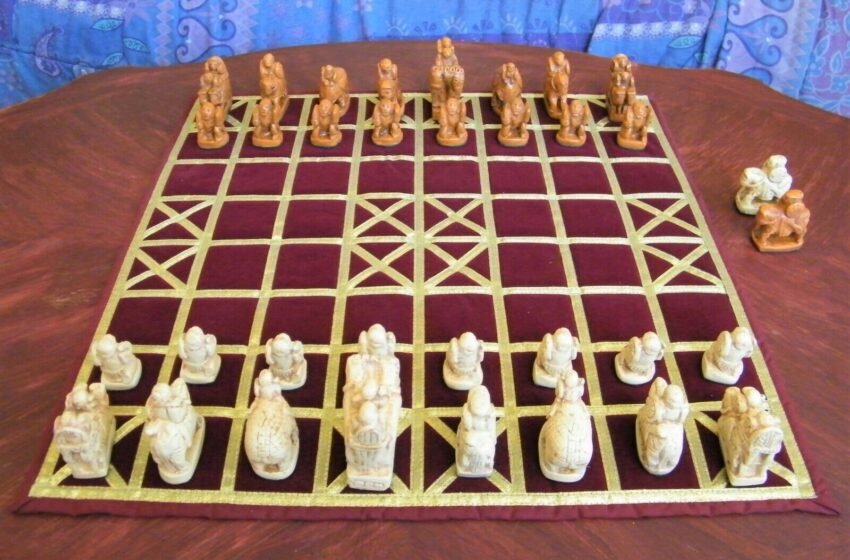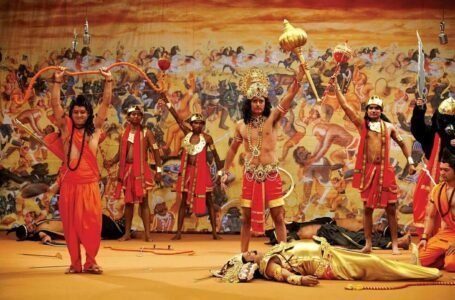Exploring the Ancient Strategy Game: A Deep Dive into Ashtapada

Ashtāpada, refers to the game’s 8×8 chekered-board. Patanjali mentioned this interpretation in a Mahābhāshya text from the second century. Literally translating, Ashtapada translates to “eight-legged” in Sanskrit. The Sutrakrilānga, an early Brahman book, explicitly denounced the game.

The Vinayapitaka, a canonical Buddhist literature from the fourth or third century BC that introduces the Buddha’s Dialogues, lists a number of activities that the converted man should avoid. This list includes games such as Ashtapada (8×8 gaming board) and Dasapada (10×10 gaming board). A few times later, a Jain scripture, the Suyagadamga, says: “He should not learn to play the ashtapada game”. Hence, it is one of the games Buddha would not play.
Ashtapada was a dice game, from the early times, and could then ruin the spirit of wise men and make them too passionate and violent. Perhaps, this is the reason why the rules of the game have been lost. When new games overtook India many years later (6th century AD and beyond), the game of Ashtapada was completely forgotten, and the word was only used to refer to the gaming board, Nard (a forerunner to Backgammon), and chess. For example, Amarasimha’s Amarakosa (6th or 7th century) mentions that Nard was played over an Ashtapada. Banabhatta’s Harshacharita (7th century) accomplishes the same with chess. The word then took on various meanings before disappearing entirely after the 12th century. It disappeared from history, and no one knows exactly what it was!

In India, the chessboard was unicolor and presented some cross-cut squares. These markings were similar to those found in modern spiral race games – like the Thaayam in Sri Lanka, H.J.R. Murray, the great Chess historian, made the hypothesis that Ashtapada was a spiral race game as well. But strictly speaking nobody knows what kind of game was being played on the ashtapada as all the theories are simply assumptions and couldn’t be proven. The Ashtāpada board is an 8×8 grid of squares with the same colour, similar to a chessboard. The board features special markers known as “castles” that protect pieces from being captured or withdrawn from play.

It was a game to be played between 2 to 4 players. Each player is given an even number of pieces to play the game. The path of play begins by moving along the outer edge, counterclockwise, and then moving clockwise around the middle squares. Then turn and move counterclockwise to meet the centre. Four cowrie shells govern movement in the game. The game involves some tactical skills but still is relatively simple to play. It is simple to memorize the path around the board, but it can be challenging to identify and retain that your opponent’s paths are simply rotated copies of your own. It is simple to overlook this and attempt plays that would threaten enemy pieces that you will never be able to reach.

There is also a contested view about the game that it was, in fact, a precursor to chess. Believers base their argument by the fact that Ashtapada had 8-by-8 checkered blocks i.e. 64 total blocks, same as the modern-day chess. But nothing much could be proven. There is also a variant played on a ten-by-ten board and is known as Dasapada.
The fact that Ashtapada made the transition from royal courts to living rooms all over the world is evidence of its enduring appeal. In addition to being entertaining, this strategic game provides an insight into India’s rich history in mathematics and strategy. Thus, the next time you’re searching for an enjoyable task, get your loved ones together and take on a game of Ashtapada! The depth and intrigue it offers may surprise you.


